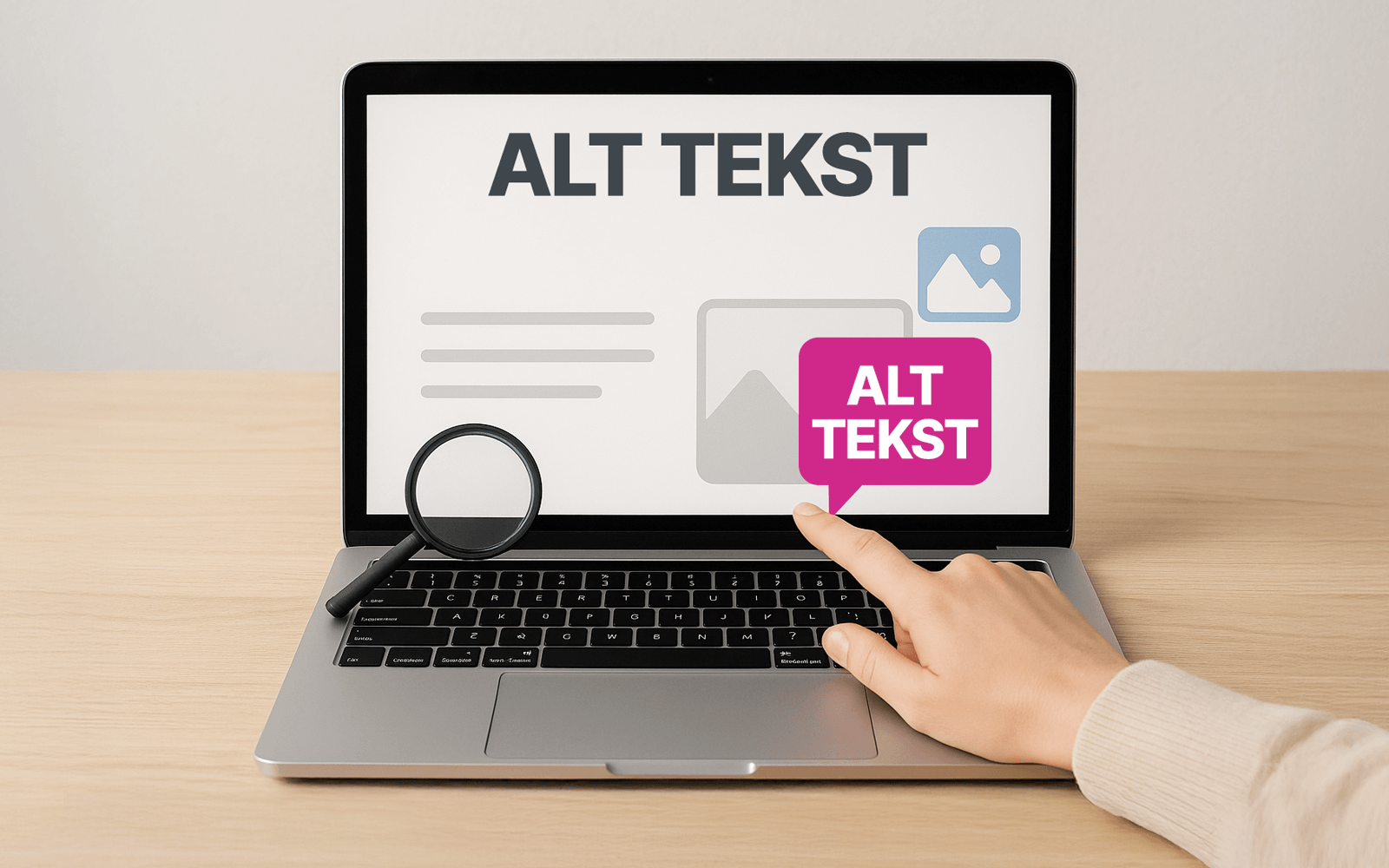
Why alt text for images is essential for SEO and digital accessibility
Each image on your website tells a visual story. But what if a user can't see the image? Or when a search engine doesn't understand what's being shown? That's exactly why alt text (also known as alt attributes whether alternative text mentioned). A small but powerful addition to you web design that is crucial for both search engine optimization (SEO) and digital accessibility.
In this article, we'll explain what alt text is, why it's important for your website, how to implement it correctly, and how to test that everything is set up correctly. We conclude with five practical tips for better alt texts.
What is alt text?
Alt text is a short description that you add to an image via HTML. The full name is “alternative text” and appears when an image fails to load or when a screen reader reads the website to a visually impaired user.
Technically, for example, it looks like this:
<img src="ambasco-posterdesign.jpg" alt="Posterontwerp voor duurzame conferentie door Ambasco">
Why is alt text important?
1. Accessibility
An ALT text ensures that people with a visual impairment or dyslexia understand what is in an image. The description is read aloud via screen readers, so that visual content is not lost. Websites without correct alt texts are partly unusable for this group. This is not only undesirable, but in some cases also contrary to the law (such as the WCAG guidelines).
2. SEO (Search Engine Optimization)
Search engines like Google can't “see” images like people do. They use alt text to understand what an image is about. Well-written alt texts help your website rank better in search results, especially in Google Images. This leads to more visibility and potential traffic.
How do you set alt text correctly?
With most CMS systems (such as WordPress, Webflow or Shopify), you can easily enter alt text per image. Make sure you don't use empty terms like "image1.jpg" or just “photo”. Clearly describe what the image shows and why it's relevant to the context of the page.
Please note:
- Decorative images (such as a line or background decoration) do not require alt text. In that case, give them alt= “” so that screenreaders skip them.
- Don't unnecessarily repeat text that is already right next to the image.
How do you test whether alt texts are set correctly?
There are several ways to check your website for this:
- Screen reader test: Use a screen reader (such as NVDA, Narrator (Windows) or Apple's VoiceOver) to browse your website as a visually impaired user would.
- SEO tools:Tools such as Screaming Frog, Ahrefs, or SEMRush can generate a report of missing or duplicate alt texts.
- Lighthouse in Chrome DevTools: Perform an accessibility audit to detect missing alt texts.
- WAVE Web Accessibility Tool: This tool marks directly on the page which images do or do not have alt text.
5 tips for strong alt lyrics
- Be descriptive and concise
Write like you're explaining it to someone who doesn't see the image. Keep it between 5 and 15 words. - Use relevant keywords, but avoid keyword stuffing
If it fits, of course, use an important keyword, but keep the text readable. Don't use keywords because you've heard it's good for your SEO. The Alt Texts must be logical so that a screen reader actually reads something meaningful. In any case, keywords are becoming less and less important in SEO due to the AI applications. - Avoid “image of” or “photo of”
This is unnecessary — screen readers already know it's an image. - Adapt alt texts to the context
The same image may have different alt text on different pages, depending on the content of the page. - Do not use alt text for purely decorative images
Give it an empty alt tag (alt= “”) so that screen readers skip it and don't distract the user.
Lastly
Alt text may seem unimportant. After all, it's something you don't see right away. But it certainly has an impact. By using it properly, you make your website more accessible to everyone and ensure that your visual content also contributes to your visibility in search engines. A well-designed website is not only more beautiful, but also smarter.
At Ambasco, we combine design, content and technology. Do you want to know if your website scores well in this area? Contact us — we'll be happy to help.



